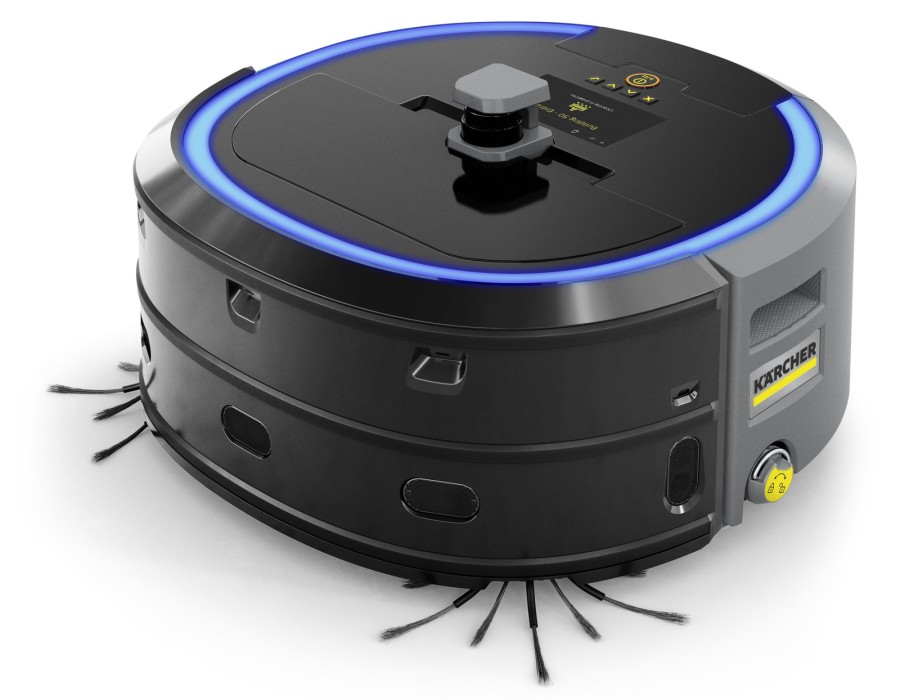Introduction
Samsung Electronics Co., Ltd., a global leader in consumer electronics, has been making significant strides in the Autonomous Robot Vacuum Cleaner Market. With a robust presence in various technology sectors, Samsung continues to innovate and adapt, driving advancements in the smart home market. As the demand for intelligent, efficient, and automated cleaning solutions grows, Samsung's strategic initiatives and emerging technologies are shaping the future of autonomous cleaning devices.
Samsung's Strategy in the Autonomous Robot Vacuum Cleaner Market
Samsung's approach to the autonomous robot vacuum cleaner market is rooted in its commitment to innovation and consumer-centric design. The company focuses on leveraging its technological expertise, particularly in artificial intelligence (AI), robotics, and IoT (Internet of Things), to enhance the capabilities of its robot vacuums. By integrating advanced sensors, smart mapping, and automation features, Samsung aims to provide seamless and efficient cleaning experiences for its customers.
Samsung’s strategy also revolves around enhancing the connectivity and interoperability of its robot vacuums with other smart home devices. By developing products that work within the broader Samsung SmartThings ecosystem, the company ensures a smooth and synchronized experience for users who own multiple smart devices.
Emerging Innovations in Autonomous Robot Vacuum Cleaners
AI and Machine Learning
Samsung has incorporated AI and machine learning capabilities into its robot vacuums to improve performance and adaptability. These technologies enable the vacuum cleaners to learn and optimize cleaning patterns based on users’ behavior, home layouts, and other environmental factors. This ensures that the vacuum cleaners become more efficient over time and are capable of handling different types of floor surfaces and obstacles.
Advanced Navigation and Mapping Technology
One of the most critical aspects of autonomous robot vacuums is their ability to navigate efficiently and map the area to be cleaned. Samsung has developed sophisticated mapping and navigation systems that allow its robot vacuums to create detailed floor maps, plan optimal cleaning paths, and avoid obstacles. With features like LiDAR (Light Detection and Ranging) and camera-based sensors, Samsung’s vacuums can accurately detect and navigate through various environments, ensuring a more thorough and consistent cleaning.
Integration with Smart Home Ecosystems
As part of its strategy to expand its presence in the connected home market, Samsung has integrated its robot vacuums with its SmartThings ecosystem. This enables users to control and monitor their vacuums through mobile apps, voice assistants like Samsung Bixby, and even third-party platforms like Google Assistant and Amazon Alexa. This interoperability allows for a more convenient and personalized cleaning experience.
Improved Suction Power and Battery Life
To meet the demands of consumers seeking high-performance cleaning, Samsung has focused on enhancing suction power and battery life in its robot vacuums. The company uses powerful motors and high-capacity batteries to ensure that its devices deliver consistent performance across large homes and challenging cleaning environments. Additionally, Samsung's vacuums are designed to recharge quickly, minimizing downtime and improving overall efficiency.
Developments in Autonomous Robot Vacuum Cleaner Market
Consumer Preferences Shaping Product Design
Consumer preferences for quieter, more efficient, and intelligent cleaning solutions have led to the development of features like noise reduction technology, stronger suction power, and increased automation. As more consumers seek robotic vacuums that can adapt to their homes' specific needs, Samsung continues to refine its product design to match these evolving demands.
Sustainability Initiatives
As part of its corporate social responsibility initiatives, Samsung has made efforts to integrate sustainable practices into the design and manufacturing of its robot vacuums. This includes using eco-friendly materials in its devices and optimizing energy efficiency to reduce power consumption. With the growing importance of sustainability in consumer electronics, these steps help Samsung align with global trends and meet the expectations of environmentally-conscious customers.
Global Expansion and Market Penetration
Samsung’s robot vacuum cleaners have gained significant traction in various international markets. The company’s ability to expand its reach and adapt to local consumer needs has been pivotal in its success. As part of its strategy for global market penetration, Samsung continues to invest in marketing, distribution, and customer support infrastructure, ensuring that its products are accessible to a wide range of consumers worldwide.
Conclusion
Samsung Electronics Co., Ltd. has solidified its position as a key player in the Autonomous Robot Vacuum Cleaner market through strategic investments in emerging technologies and consumer-centric innovations. By incorporating AI, advanced navigation systems, and enhancing smart home connectivity, the company continues to lead the way in providing efficient and intelligent cleaning solutions. As the demand for autonomous cleaning devices grows, Samsung’s commitment to innovation, sustainability, and global expansion will likely keep it at the forefront of this rapidly evolving market.





Comments